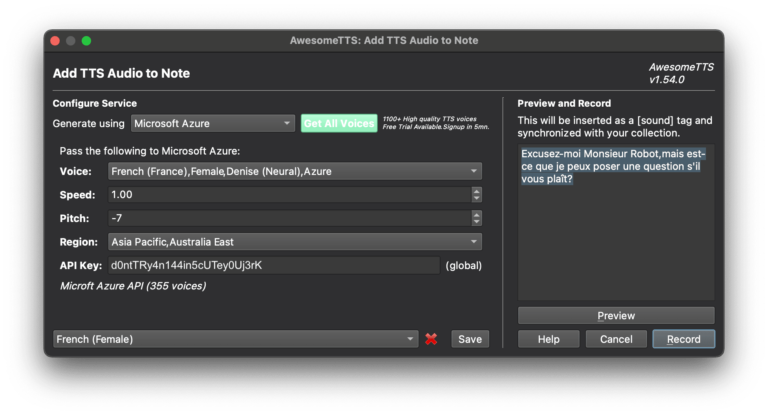7 Different Uses for Why in Spanish!
“Why” is a word that we use every day for very different things. Of course, we use it for questions, but we might also use it to answer, to give a reason, in phrases, and even to suggest. And, if you’re a student of Spanish or are interested in learning it, you might want to know of the ways to say why in Spanish and how to use them in different contexts.
Well, as the Backstreet Boys said, tell me “why”, but this time, we’ll do it in Spanish!
Why in Spanish at a Glance
All the Ways to Say Why in Spanish

Why – as a question
Of course, we will first have a look at how to say why in Spanish as a question because it is the one we use the most and the one we think of first. To say “why” as a question in Spanish, we use the phrase por qué. Por qué is used to ask for reasons and explanations, just like in English.
In Spanish, we never change the order of words for questions, so we simply add the por qué before the affirmative sentences to turn it into a question with “why”.
Let’s see some examples:
Spanish
- ¿Por qué estás triste?
- ¿Por qué me miras así?
English
- Why are you sad?
- Why do you look at me like that?
Read next: Por qué vs Porque: What’s the difference?
Why – as a negative question (Why don’t)
The other way we might use why as a question, is as a negative question. For example we might ask someone “Why DON’T they do something?” In this case, we could also use por qué we simply need to add the negation adverb no. So the way to say “Why don’t” in Spanish is por qué no.
Spanish
- ¿Por qué no me visitas más?
- ¿Por qué no te gusta la carne?
English
- Why don’t you visit me more?
- Why don’t you like meat?
Besides this use, we can also use negative questions with por qué to give advice or a suggestion. Let’s see some examples:
Spanish
- ¿Por qué no ejercitas?
- ¿Por qué no nos acompañas?
English
- Why don’t you exercise?
- Why don’t you come with us?
Why – in reported speech
When we’re saying what someone else said, both in Spanish and in English, we usually use reported speech, also known as indirect speech. Reported speech is used when you’re retelling what someone else has said.
For example, let’s say that Laura asked “Why does she act like that?” If we were to talk to someone about what Laura said, we would say:
- Laura asked why she acted like that.
Luckily in this situation, we would still use por qué.
Spanish
Laura preguntó por qué actuaba así.
English
Laura asked why she acted like that
Let’s see a few more examples:
Spanish
- Pedro preguntó por qué no lo saludaste
- Federico le preguntó a Juan por qué estabas triste
English
- Pedro asked why you didn’t say hi to him
- Federico asked Juan why you were sad
Why – as a response
In English, we can also use “why?” as a way to follow up with a statement and get more information about the reasoning behind something someone has said. In Spanish, we can do the same thing and use ¿por qué?
Let’s have a look at the following conversations!
| Spanish | English |
| Ana: Estoy muy feliz. Ricardo: ¿Por qué? | Ana: I’m very happy Ricardo: Why? |
| Anna: Me gustaría tener un perro. Ricardo: ¿Por qué? | Anna: I would like to have a dog. Ricardo: Why? |
Why – as a response to a negative statement
If the statement someone else says is negative, instead of saying ¿por qué? we will actually add the negation adverb we’ve seen before and ask ¿por qué no? Let’s see some examples:
| Spanish | English |
| Ana: No estoy para nada feliz. Ricardo: ¿Por qué no? | Ana: I’m not happy at all. Ricardo: Why not? |
| Anna: No me gustaría tener un perro Ricardo: ¿Por qué no? | Anna: I wouldn’t like to have a dog. Ricardo: Why not? |
We can also use “Why not?” and ¿Por qué no? to reply to a suggestion or invitation and, actually, agree to them. In this instance, it’s similar to in English, saying “Sure, why not?”
| Spanish | English |
| Ana: ¿Quieres ir al cine? Ricardo: ¿Por qué no? | Ana: Do you want to go to the movies? Ricardo: (Sure) Why not? |
| Anna: ¿Vamos a comprar tacos? Ricardo: ¿Por qué no? | Anna: Should we go buy tacos? Ricardo: (Sure) Why not? |
Why – to give a reason for something
In English, we can also use “why” to start giving a reason or explanation for something. For example, in English we might say “I miss my mother. That’s why I keep a photo of her in my wallet”.
In Spanish, we can also say this in Spanish, but in this case, we don’t use the phrase por qué. Instead, to say “that’s why” we say es por eso que. For example:
Spanish
- Extraño a mi madre, es por eso que llevo una foto de ella en mi cartera.
- Tengo mucho sueño, es por eso que me voy a dormir temprano.
English
- I miss my mother, that’s why I keep a photo of her in my wallet.
- I’m very sleepy, that’s why I go to bed early.
Why on Earth?
Another way in which we use “why” in English is in the phrase “Why on Earth…?”, which we use to express surprise and shock, sometimes even anger. So we can use it as an informal alternative to “why” in some conversations.
In Spanish, a similar phrase could be ¿Por qué diablos…? Diablo in Spanish means “devil”, so it can be translated to “Why the devil…” Similar to the way it’s used in English, the phrase is used when asking about something incredulous or very surprising.
Spanish
- ¿Por qué diablos no hiciste lo que te dije?
- ¿Por qué diablos fuiste a esa fiesta?
English
- Why on Earth didn’t you do what I told you?
- Why on Earth did you go to that party?
Key takeaways
Wow! “Why” was a really multifaceted word, wasn’t it? And now you know every way in which you can say “why” in Spanish and it’s time to put all of them into practice! Now you can not only ask for reasons and explanations in Spanish, but you can also accept invitations, make suggestions, use it in reported speech and ask it in an informal way. Actually, here’s a suggestion for you: ¿Por qué no practicas tu español?






